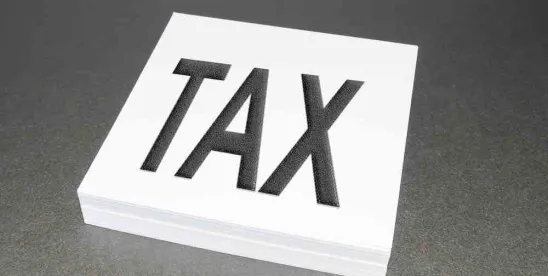While probably not the most consequential election in 2024, a bond issuer might need to decide whether to make a separate issue election under Reg. §1.150-1(c)(3) and/or a multipurpose issue allocation under Reg. §§1.148-9(h) and 1.141-13(d).[1] To ensure that issuers (and conduit borrowers)[2] are a fully informed electorate, this 2024 Election Guide will explain the who, what and why of each type of election or allocation (but not necessarily in that order).
Separate Issue Election
Who qualifies? An issuer issuing tax-exempt bonds that have more than one purpose (e.g., new money and refunding) – but only if the proceeds, investments and bonds of the aggregate issue are allocated between each of the separate purposes using a reasonable, consistently applied method. It should be noted, however, that if a refunding is one of the separate purposes, certain multipurpose issue allocation criteria (discussed below) must also be met.
Why make a separate issue election? An issuer will frequently make the separate issue election when governmental use bonds and tax-exempt qualified private activity bonds would otherwise be part of a single issue for federal income tax purposes (because the governmental use bonds and qualified private activity bonds will be payable from the same source of funds and will be sold at substantially the same time (i.e., within 14 days of each other) pursuant to the same plan of financing). For example, a state university may be selling governmental use bonds and qualified 501(c)(3) bonds at substantially the same time pursuant to the same plan of financing, and these bonds are payable from the same source of funds. Also, some airport financings involve both governmental use bonds and exempt facility bonds. Both qualified 501(c)(3) bonds and exempt facility bonds are subject to more stringent rules than governmental use bonds. Thus, it is often beneficial for the issuer to separate the governmental use bonds from the other more highly regulated qualified private activity bonds.
A separate issue election may also be made where a single issue would violate the $150 million limit that applies to nonhospital, qualified 501(c)(3) bonds. Under these circumstances, the 501(c)(3) conduit borrower will want to separate the portions of the issue subject to the $150 million limit (often the portion allocable to the direct or indirect refunding of much older bonds) from the portion that is not subject to such limit.
What else should an informed issuer know? The separate issue election does not apply for certain purposes, including, but not limited to, the private business use tests,[3] for arbitrage or rebate calculations, or when applying the hedge bond rules. Also, this election must be made in writing by the issuer on or before the issue date (this is usually done in the tax certificate).
Multipurpose Issue Allocations
Who qualifies? An issuer issuing tax-exempt bonds that have more than one purpose (e.g., new money and refunding) – but only if the proceeds, investments and bonds of the aggregate issue are allocated between each of the separate purposes using a reasonable, consistently applied method. (Sound familiar?) Also, if a refunding is a separate purpose, the bonds (or portions of bonds) of the issue must be allocated to that refunding portion either (i) using a pro rata allocation, (ii) in proportion to the remaining weighted average economic life of the refinanced capital projects, or (iii) to reflect what is commonly referred to as “debt service savings.”[4]
Why would you want to make a multipurpose issue allocation? Sometimes it’s required, or, at a minimum, advisable. For example, for a separate issue election under Reg. §1.150-1(c)(3) to be valid (e.g., to avoid the $150 million limit applying to an entire issue) when one specific purpose is a current refunding, a multipurpose issue allocation under Reg. § 1.148-9(h) should also be made.
Another reason to make a multipurpose issue allocation pursuant to Reg. § 1.148-9(h) is when a tax-exempt issue includes a current delivery portion intended to finance new money projects and a forward delivery portion intended to currently refund outstanding bonds. (Remember, bonds that are issued on different dates are still part of one issue for federal tax purpose if they are sold at substantially the same time pursuant to the same plan of financing and are payable from the same source of funds). If a multipurpose issue allocation were not made under these circumstances to allocate the refunding portion to the forward delivery bonds and the new money portion to the current delivery bonds, and the forward delivery portion is used to refund bonds more than 90 days after the current delivery portion is issued, an impermissible advance refunding will have occurred – making the entire issue taxable. The advance refunding would arise because, in the absence of a multipurpose issue allocation to the contrary, a pro rata portion of each bond of the issue would be allocable to the refunding portion and the new money portion. (Speaking of impermissible advance refundings, issuers used to make multipurpose issue allocations in order to isolate advance refunding bonds from a later advance refunding of bonds – back in the good old days – when issuers could generally advance refund tax exempt bonds with tax exempt bonds one time).
A multipurpose issue allocation may also be made under the right circumstances to preserve the exception from rebate for small issuers when previously qualified bonds are being currently refunded.
What else should an informed issuer know? A multipurpose issue allocation does not apply to all tax-exempt bond provisions. For example, it does not apply when determining yield or rebate payments or when calculating a reasonably required reserve. Moreover, unlike a separate issue election, which must be made on or before the issuance date of the issue, a multipurpose issue allocation can be made at any time. Once made, however, the allocation cannot be changed, so choose wisely. Finally, there are limitations for multi-generational issues, which the author of this blog post will not drive the readers crazy with now.[5]
TLDR – Although this 2024 Election Guide is intended to inform issuers and conduit borrowers of their options when a tax-exempt bond issue has more than one specific purpose, it is always best to discuss these matters with a public finance tax attorney.
[1] Reg. §1.141-13(d)(1) provides that “[f]or purposes of Section 141, unless the context clearly requires otherwise, §1.148-9(h) applies to allocations of multipurpose issues . . . including allocations involving the refunding purposes of the issue.” Given the largely derivative nature of multipurpose issue allocations under Reg. §1.141-13(d), and in the interest of simplicity, references in this blog post to multipurpose issue allocations under Reg. §1.148-9(h) include such allocations under §1.141-13(d), unless, of course, the context clearly requires otherwise (which it won’t). In case you were wondering, multipurpose issue allocations do not apply for purposes of Code Sections 141(c)(1) (private loan financing test) and 141(d)(1) (acquisitions of nongovernmental output property).
[2] In the further interest of simplicity, the remainder of this blog post will use the term “issuer” to include issuers and conduit borrowers.
[3] Code Section 141(b)(9) does provide a bifurcation election for purposes of Sections 141(b) and (c) where a portion of the proceeds would be treated as a qualified 501(c)(3) bond had that portion been issued as a separate issue.
[4] The term “debt service savings” is a bit of a misnomer. The regulations provide that the debt service on the refunding bonds must be “less than, equal to, or proportionate to” the debt service on the refunded bonds in each bond year. (Reg. §1.148-9(h)(4)(v)(B)).
[5] You’re welcome.




 />i
/>i

